Nath CH8: Eyes & Ears
1/156
Earn XP
Description and Tags
p. 279
Name | Mastery | Learn | Test | Matching | Spaced |
|---|
No study sessions yet.
157 Terms
blephar/o
eyelid (root)
conjunctiv/o
conjunctiva (root)
corne/o
horny
dacry/o
tears, lacrimal sac/lacrimal duct (root)
dipl/o
two, double (root)
irid/o
iris (root)
kerat/o
hard, cornea (root)
lacrim/o
tear, lacrimal apparatus (root)
ocul/o, opthalm/o
eye (root)
-opia
vision (suffix)
opt/o
light, eye, vision (root)
phac/o
lens (root)
presby/o
old age (root)
pupil/o
pupil (root)
retin/o
retina (root)
scler/o
relating to the sclera, hard (root)
uve/o
denoting the pigmented middle eye layer (root)
acous/p, acus/o, acoust/o
hearing (root)
audi/o
sound (root)
aur/o, auricul/o, ot/o
ear (root)
myring/o, tympan/o
tympanic membrane/eardrum (root)
staped/o
stapes (root)
AD
right ear (abbreviation)
AS
left ear (abbreviation)
AU
both ears (abbreviation)
EOM
extraocular movement (abbreviation)
IOP
intraocular pressure (abbreviation)
LASIK
laser-assisted in situ keratomileusis (abbreviation)
OD
right eye (abbreviation)
O.D.
doctor of optometry (abbreviation)
OM
ottis media (abbreviation)
OS
left eye
OU
both eyes
accomodation
the process that allows the shape of the lens to change for near and far vision
aqueous humor
watery substance filling the space between the lens and the cornea
canthus
angle where upper and lower eyelids meet
choroid
opaque middle layer of the eyeball
ciliary body
set of muscles and suspensory ligaments that adjust the shape of the lens
cones
color receptors on the retina that have high visual acuity
conjunctiva
mucous membrane covering the anterior of the eyeball and the inner eyelid
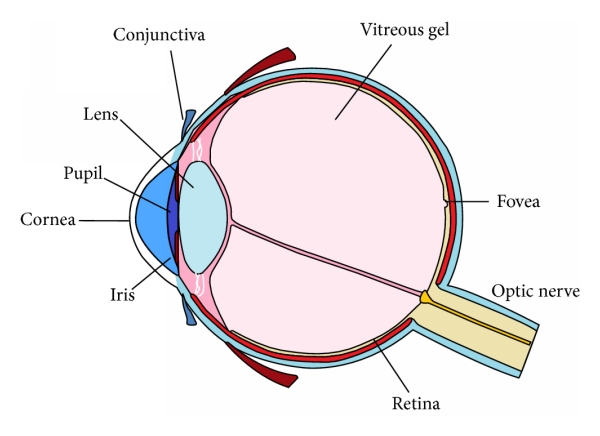
cornea
transparent shield of tissue forming the outer wall of the eyeball
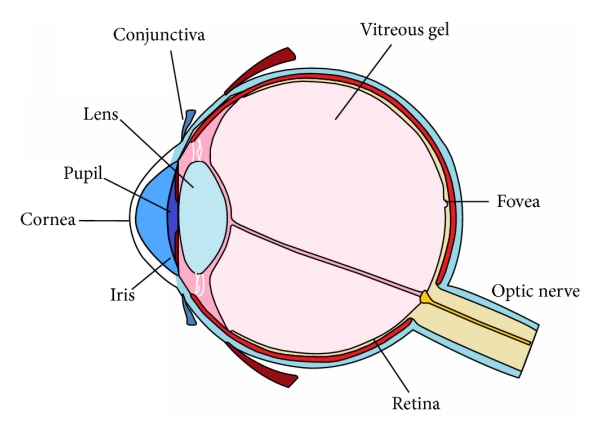
dacrocyst
dilated upper portion of nasolacrimal duct; aka tear/lacrimal sac
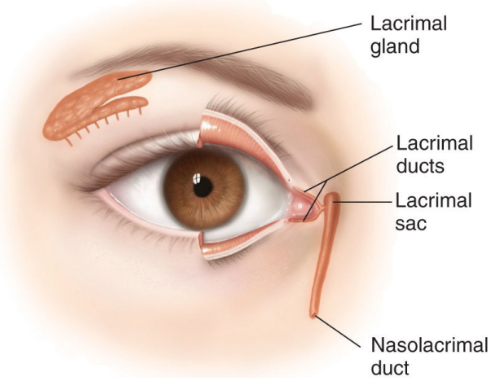
extraocular muscles
muscles within the orbit but outside the eyeball
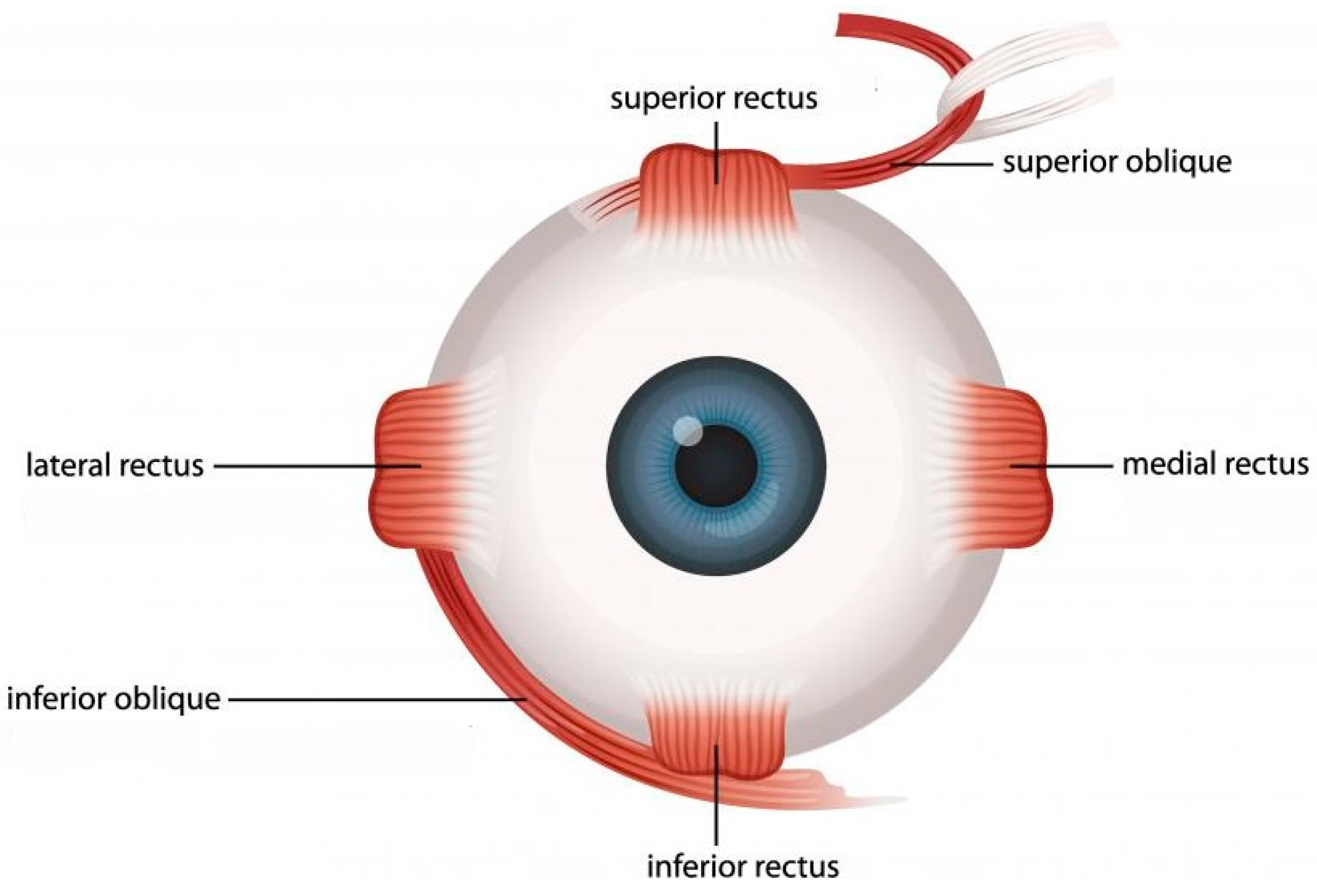
eyebrow
arched line of hairs on the superior edge of the orbit
eyelids
moveable folds that cover the front of the eyes when they close; aka palpibrae
fovea centralis
depression in the middle of the retina that is the area of sharpest vision
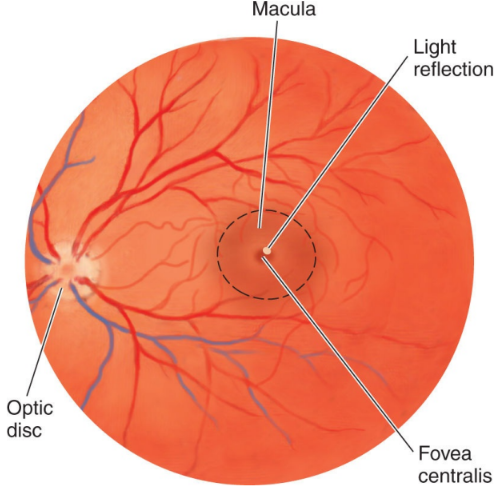
iris
anterior part of the vascular tunic; colored part of the eye
lacrimal apparatus
lacrimal gland + lacrimal lake + lacrimal canaliculi + lacrimal sac + nasolacrimal duct
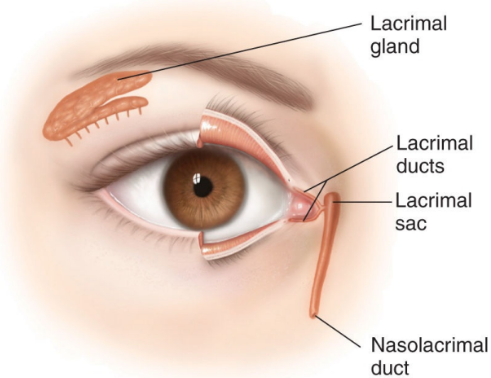
lacrimal ducts
channels that carry tears to the eyes
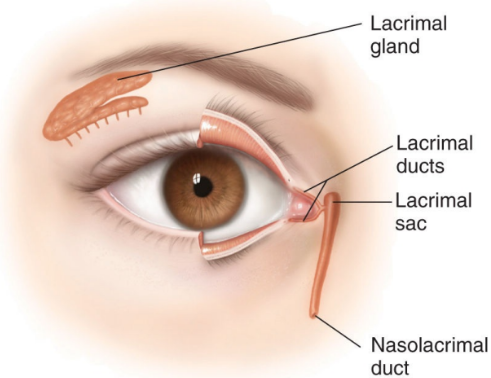
lacrimal glands
glands that secrete tears
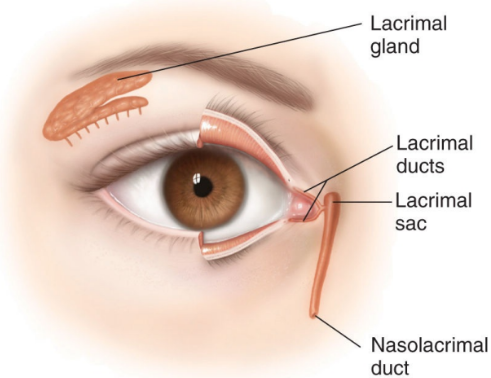
lacrimal fluid
watery, physiologic saline; tears
lacrimal sac
dilated upper part of the nasolacrimal duc
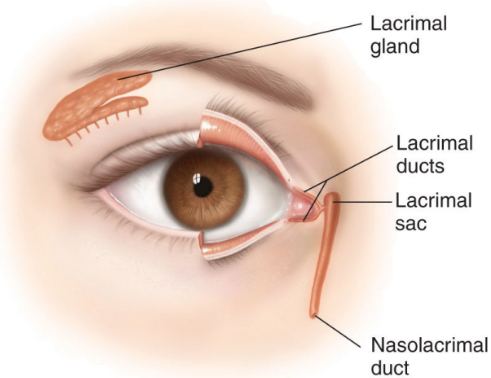
lateral angle of the eye
angle formed by the union of the lateral parts of the upper eyelid and the lower eyelid; aka lateral canthus
lens
refractive structure of the eye, lying between the iris and the vitreous humor
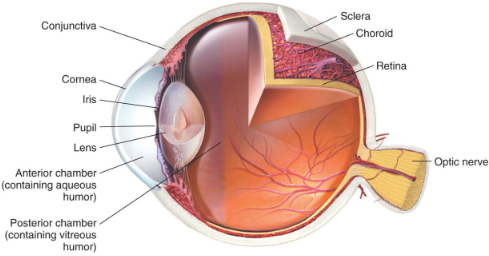
medial angle of the eye
angle formed by the union of the upper eyelid and lower eye lid; aka medial canthus
nasolacrimal ducts
ducts that carry tears from the lacrimal glands to the nose
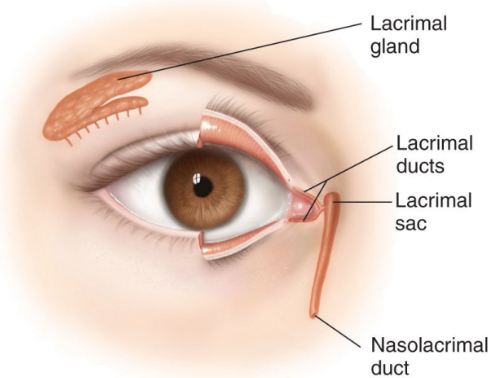
ocular
adjective referring to the eye
optic disc
oval area in the eye w/o light receptors; blind spot
optic nerve
cranial nerve responsible for vision
ortbit
bony depression in the skull that houses the eyeball
palpebra
eyelid
photoreceptors
retinal cones and rods
pupil
dark part in the center of the iris through which light enters the eye
retina
light-sensitive membrane forming the innermost layer of the eyeball
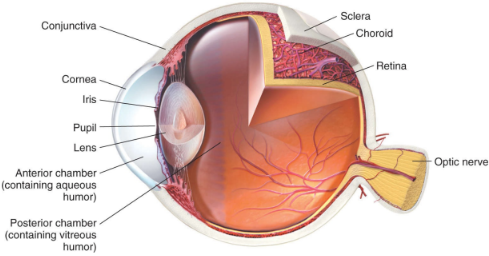
rods
black and white photoreceptors on the retina that respond to dim light
sclera
the outer surface of the eye; part of the fibrous tunic; white part of eye
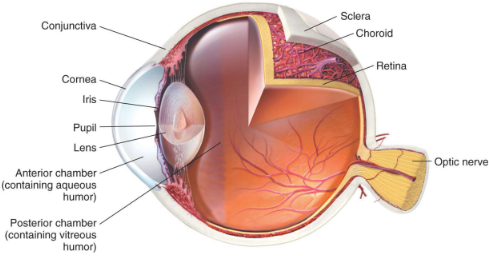
uvea
vascular layer of the eye
vitreous body
transparent jellylike substance filling the interior of the eyeball
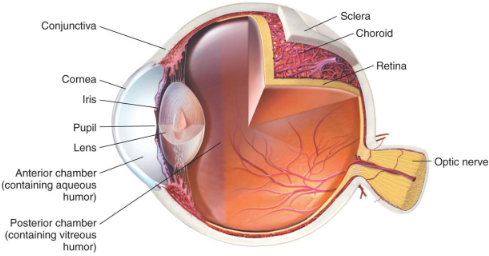
vitreous humor
fluid component of the vitreous body
amblyopia
visual acuity not the same in both eyes; lazy eye
astigmatism
irregular shape of one/both eyeballs —> fuzzy vision
blepharitis
inflammation of the eyelid
blepharoconjunctivitis
inflammation of the palpebral conjunctiva (inner lining of the eyelids)
blephagroplegia
paralysis of an eyelid
blepharoptosis
drooping eyelid
blepharospasm
involuntary contraction of the eyelid
cataract
complete or partial opacity of the ocular lens
conjunctivitis
inflammation of the conjunctiva; pinkeye
dacryocele
enlargement of the lacrimal sac with fluid
dacryocystitis
inflammation of the tear sac
dacryolith
stone in the lacrimal apparatus
dacryorrhea
excessive discharge of tears
diplopia
condition in which a single object is perceived as 2; double vision
ectropion
eversion (turning out) of the eyelid
entropion
inversion (turning) in of the eyelid
glaucoma
increased intraocular pressure (IOP) —> damage/atrophy to optic nerve —> blindness if untreated
hordeolum
eye gland infection; aka sty
hyperopia
image falls behind retina —> farsightedness
iridomalacia
softening of the iris
iritis
inflammation of the iris
keratitis
inflammation of the cornea
lacrimal
referring to or related to tears or the dear ducts and glands
lacrimation
secretion of tears, especially in excess
myopia
image falls in front of retina —> eye elongates —> nearsightedness
oculodynia
eyeball pain; aka opthalmagia
oculopathy
any disease of the eyes; aka ophthalmopathy
ophthalmolith
stone in the lacrimal apparatus; aka dacryolith
ophthalmomalacia
softening of the eyeball
presbyopia
aging —> farsightedness
retinitis
inflammation of the retina